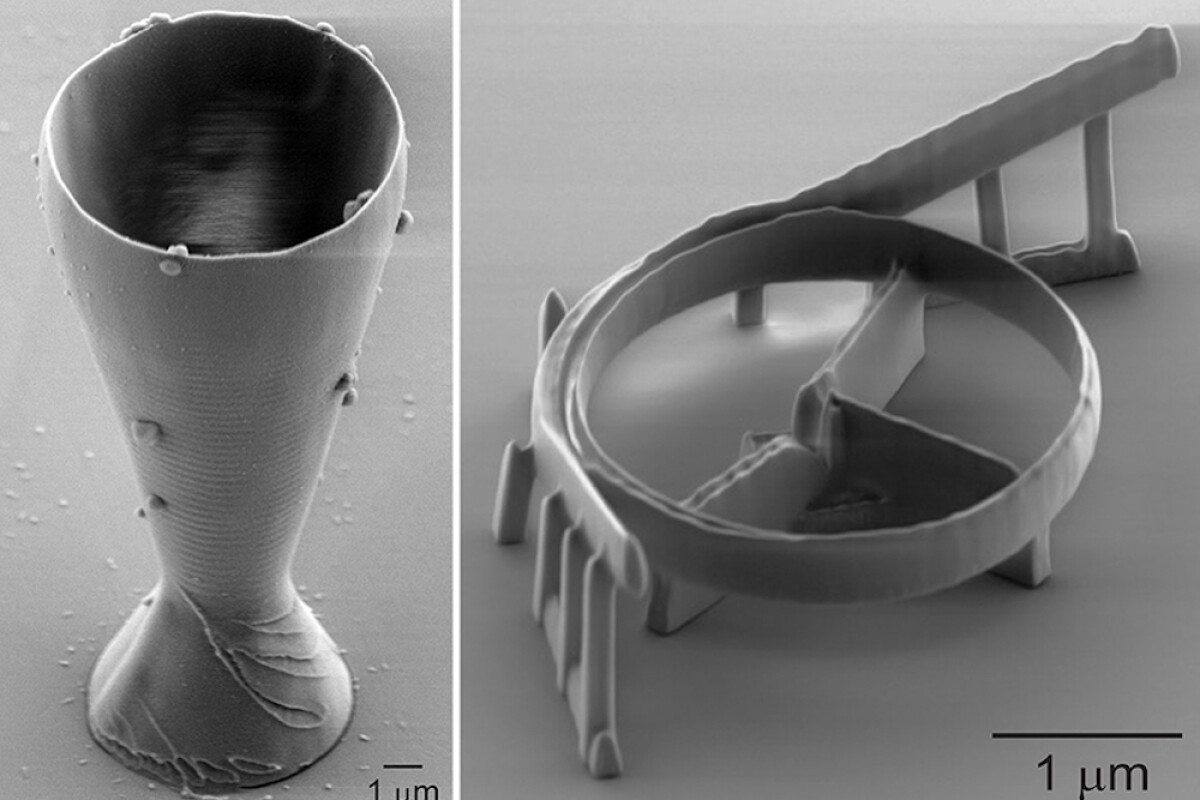World's smallest wine glass toasts to nanoscale silica 3D printing

Left: The tiny, 3D-printed wine glass. Right: An optical resonator, an example of a fiber optics component that can be 3D printed through the new technique
KTH Royal Institute of Technology
1/1
Left: The tiny, 3D-printed wine glass. Right: An optical resonator, an example of a fiber optics component that can be 3D printed through the new technique
KTH Royal Institute of Technology
Scientists have created the world’s smallest wine glass, narrower than a human hair. Made out of actual glass, the model is a test run of an advanced new 3D-printing process that could help make nanoscale glass components for electronic and optical devices.
Visible only with a scanning electron microscope, the wine glass stands just a few dozen micrometers tall. And it wasn’t alone on that tiny stage – the team also created mini models of a spiral, cantilever, an array of needles, an optical resonator, and the logo of the university behind the project, KTH Royal Institute of Technology.
Similarly tiny works of art have been 3D printed in the past, including a boat and a series of incredibly detailed nano-sculptures that are all small enough to fit on a human hair. But this new batch was all made of silica glass, in a demonstration of a new printing technology for tiny glass structures.
The process starts with a small pool of a material called hydrogen silsesquioxane (HSQ), which contains the ingredients needed to form silica glass (silicon dioxide). To do so, the liquid is zapped with laser pulses that each last mere trillionths of a second, which causes the HSQ to crosslink into silica glass at the focal point of the laser. The process was able to create voxels (3D pixels) as small as 65 x 260 nanometers, allowing the system to print the object right in the HSQ.
The team says this technique is far more efficient than existing 3D-printing methods for glass, which usually require high temperatures for long periods. As a bonus, the objects made this way can still withstand high heat during use.
It isn’t, however, just the dawn of an impressive new art form. The researchers say it could be used to make much smaller, more precise glass components for optical systems, such as lenses or resonators. In fact, these components can be 3D printed directly on the tip of a fiber optic cable.
“The backbone of the internet is based on optical fibers made of glass,” said Kristinn Gylfason, co-author of the study. “In those systems, all kinds of filters and couplers are needed that can now be 3D printed by our technique. This opens many new possibilities.”
The research was published in the journal Nature Communications.
Source: KTH Royal Institute of Technology
newatlas.com |





